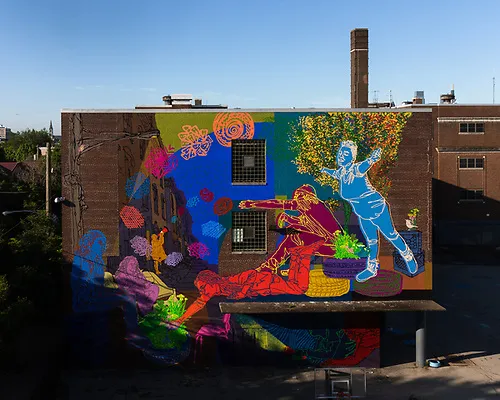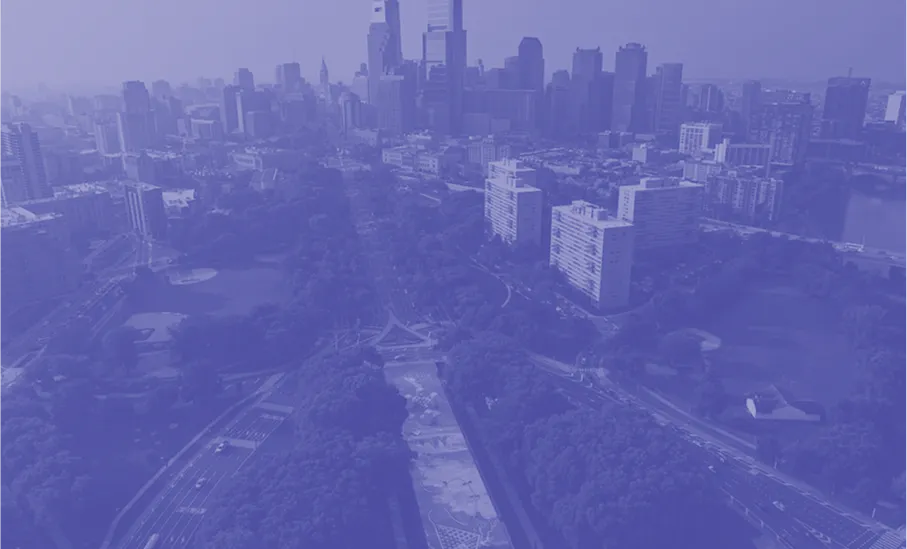Everything the Light Touches

Three key elements in the mural are:
People: Individuals represented in the mural reflect community discussions about how we respond to stress and joy in our lives. In a community meeting, neighbors described scenarios in which they were experiencing a “wicked problem” or stressful situation, and received help from someone. Students acted out these scenarios, took photographs, and turned the photographs into line drawings. People in the mural represent how social issues and internal body chemistry impact us, but we are also more than that – we can come together, help each other, and choose how to respond to our environment and our biology.
Chemicals: The abstract representations are of chemicals in hexagonal shapes such as cortisol, dopamine, and serotonin. Part of the U School STEAM curriculum was studying how social issues don’t just appear in our neighborhoods, they also manifest in the body. Social issues affect the body at a molecular level through the body’s chemical responses to stress. These molecule shapes are symbolic of how “wicked problems” and their solutions are present in our lives at a micro level.
The Community: Neighborhood imagery directly around the school such as the planters, and street scenes are in the background. In U School Humanities classes, the students studied Philadelphia’s difficult social issues, or “wicked problems,” and their solutions. The neighborhood imagery has bright colors and plants representing hope and growth. This is designed to represent how our ability to solve social issues is present in our neighborhoods.

